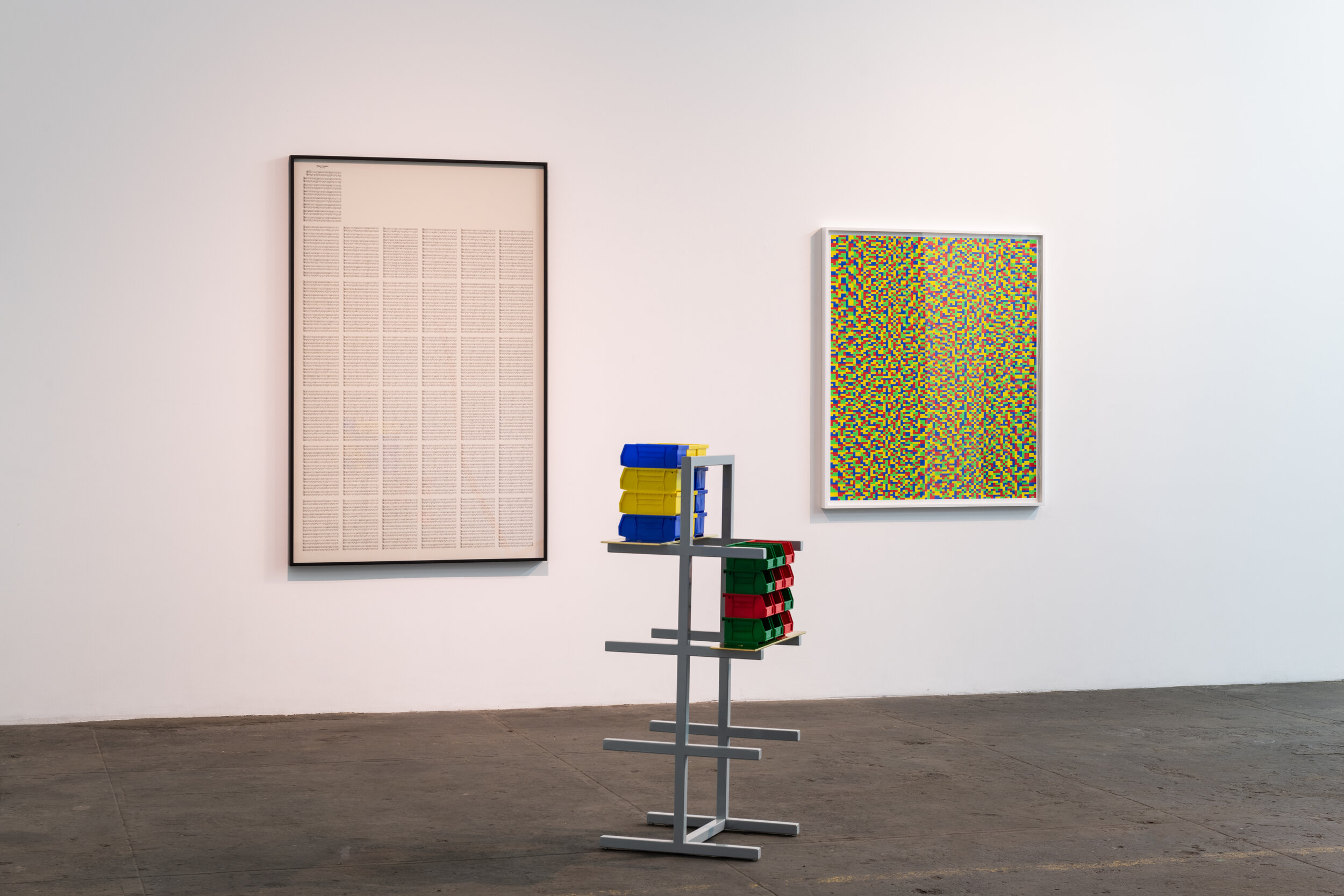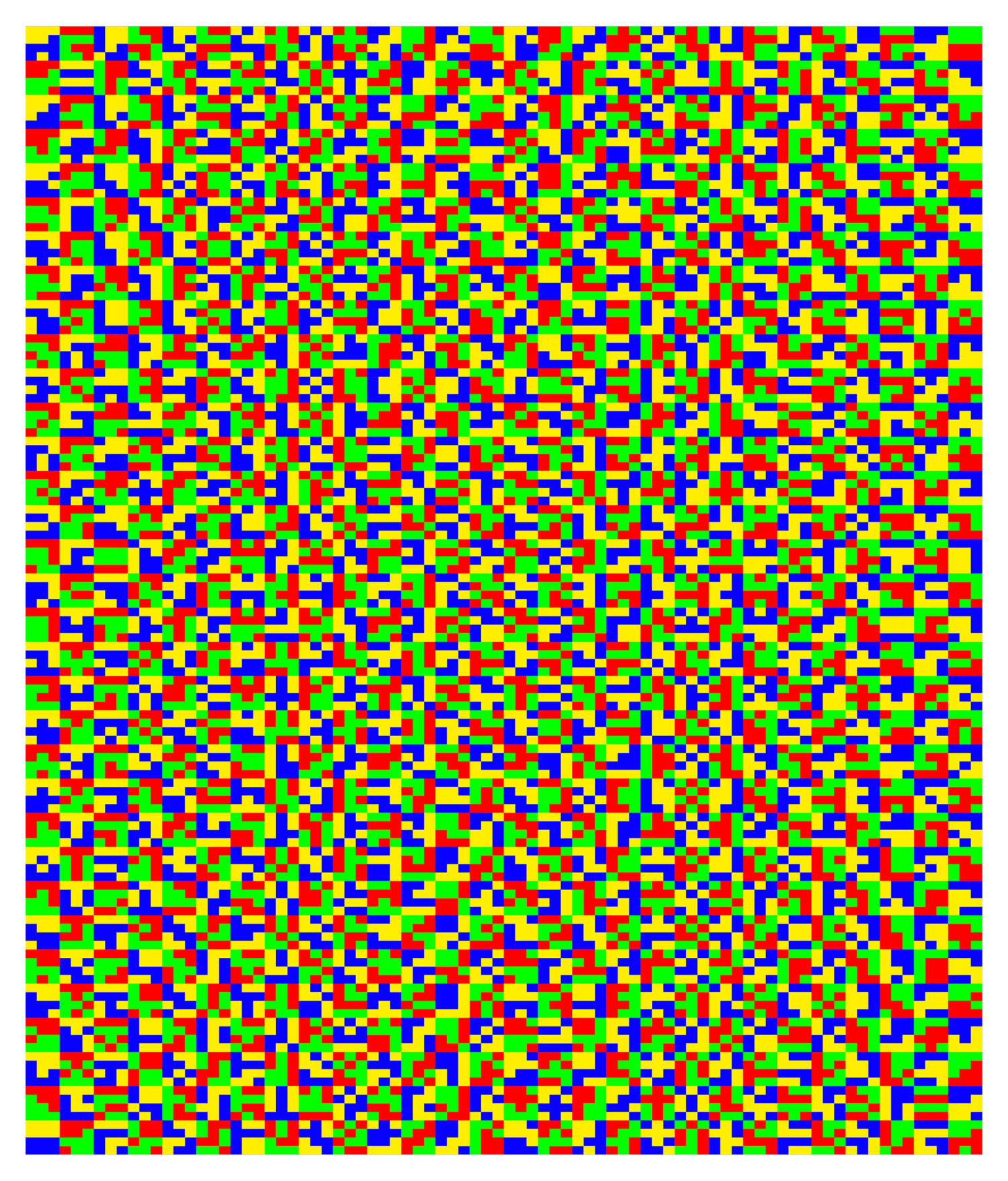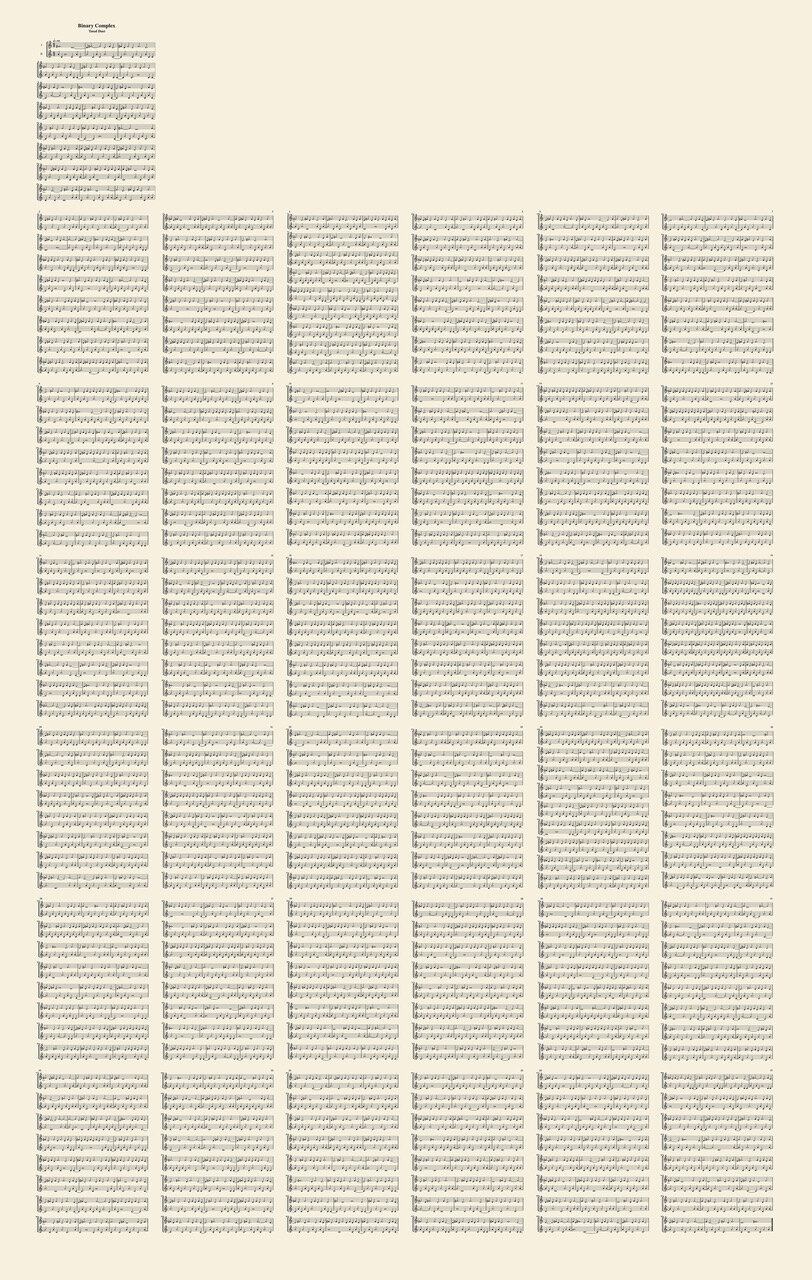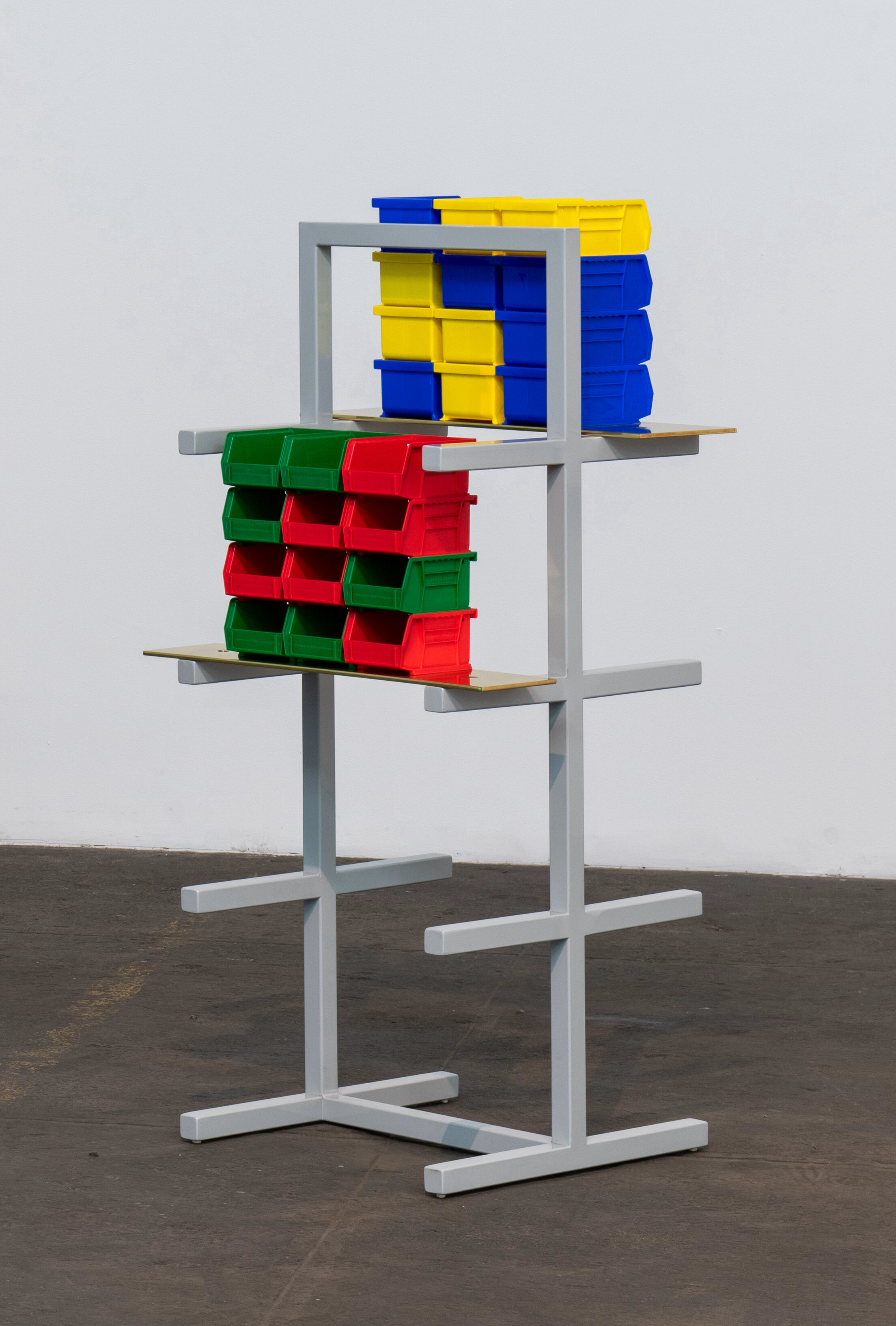DAVID SCHAFER
BINARY COMPLEX
Binary Complex is comprised of sculpture, sound, and prints of musical scores that structurally explore the idea of binaries using composition, color, sound, and data. The sculpture is comprised of a powder coated steel cantilever rack, 2 mirror polished brass plates, each with 12 empty plastic readymade storage bins. The 12 bins are divided equally between two colors, 6 blue and 6 yellow on one side, and 6 red and 6 green on the other and are stacked in 3 rows of 4. The arrangement of the bins is arbitrary but generative. The bins are three-dimensional empty containers but provide compositional content for generating the two-dimensional musical scores from data analysis. Brass, an alloy of copper and zinc, is a material that is associated with decorative or mechanical fixtures, electrical properties, and alchemical transformation. The mirror polish enhances the inherent qualities of the brass material while reflecting the bins as an illusory image. The rack itself is an abstracted structure derived from commercial and industrial bulk materials storage structures and point of purchase display fixtures. These are ubiquitous in the built environment to hold, display, and move commodities, goods, and bulk materials of all sizes and shapes. There are 924 variations for the stacked compositional arrangement of the bins. The data from this mathematical permutation was used to generate the sound composition and musical score. Each color was assigned a note and a length of one second, creating 12 second blocks in each for media visualization. Both large prints of Permutation and Tonal Duet, provide an optically immersive space to engage the field of patterns, drawing the viewer into the collected data.
The notes were assigned based on the Russian composer Alexander Scriabin’s programmatic tone poem, and synesthetic theory of tone with color and light from 1909. I’m interested in how Scriabin worked within the interstitial space between the audience and the performer, and the synesthetic connections between tone, color, and light. The four notes used are, A-green, C-red, D-yellow, and F#-blue. Scriabin initially composed his work, Mysterium in 1908 using this method, and then in 1911, his dual symphony of light and sound, Prometheus: Poem of Fire op. 60, an epic work that parallels the theatricality of opera. Prometheus was based entirely on transpositions of the mystic chord. Scriabin hoped to create ritualized performances that would overcome barriers between performers and spectators. This anticipated Bertolt Brecht’s Epic Theater of the late 1920’s and the concept of breaking the fourth wall. Informed by Symbolist theories of the theater as well as Nietzsche’s “Birth of Tragedy”, Scriabin wanted to occupy an interstitial space and enact dual roles as observer and participant in the drama. Scriabin wanted his music to affect his audience on a cosmic, metaphysical, and molecular level, to transfigure reality. He considered Prometheus as a proto-mystical experiment for the ultimate work that would bring about the dematerialization of the world and usher in universal spiritual reunification. He believed that the universe is permeated by a powerful energy called Akasa, a unitary vibration possessing multi-sensory properties. Prometheus was intended to transform a programmatic tone poem into an artwork that had spiritual power. Scriabin hoped that Prometheus would become an agent in the very metaphysical narrative it recounted, exemplifying the Symbolists belief in the power of art to transform reality.
Tonal Duet represents the transformation from the physical structure to the ethereal aspect of sound and music, and from the physical orientation of the viewing body to the listening body. The musical score for Binary Complex was created using frequency conversion into tones and musical notes by superimposing the two visual sets as a form of mapping, the red/green with the blue/yellow. One set (R/G) starts at the beginning and the other set (Y/B) starts from the end. The two sets combined generate two notes for every second with a total duration of 3 hours and 5 minutes, without any repetition. The digital version was created using SuperCollider, a programming language used for real-time audio synthesis and algorithmic composition. The data gathered from the translation of this permutation was also used to generate a 37-page musical score that can be performed by a cellist and a violist.
The duration and minimalist structure of Binary Complex recalls the Progressive Rock form of the 1960’s. Prog Rock pushed the boundaries of music to include theatrical and longer song forms, conceptual lyrics and structures, and advanced composition techniques sometimes including orchestral instrumentation, often with an immersive psychedelic effect for the audience. The sonic qualities of the combined frequencies also recall the use of drones in Indian, avant-garde, and minimalist music. The drone effect utilizes a sustained or extended sound or chord, and the repetition of a note throughout the composition.
Mathematically and digitally precise, the Permutation Score presents the idea for the dual tone combination as a dataset, a field of possible outcomes that are algorithmically translated to code and digitally generated. The Tonal Duet Score presents the musical notation that provides a score for musicians to perform using traditional instruments. In contrast to the SuperCollider version, the performance by musicians evokes their subjective human aspects and characteristics.




